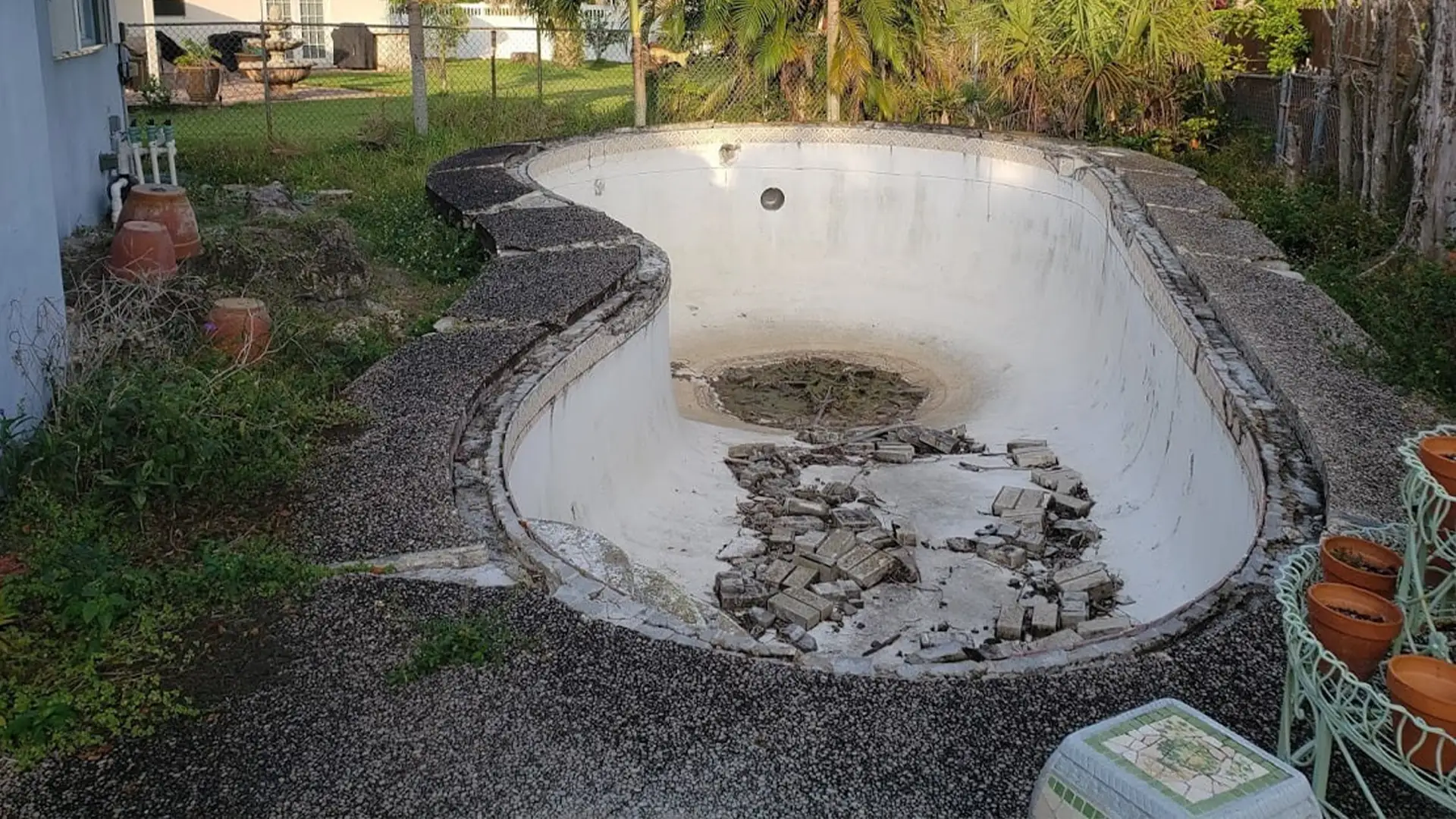The Importance of Identifying Hazardous Materials Before Pool Removal
When it comes to pool removal, abatement is an essential process that ensures the safe and responsible handling of hazardous materials, such as asbestos, that may be present in older pools or poolside structures. Proper abatement is crucial not only for the safety of workers but also for homeowners and the environment.
In this article, we’ll explore why handling hazardous materials is necessary during pool removal, and how to safely manage substances like asbestos in your project.
What is the Process for Handling Hazardous Materials?
The process of safely managing hazardous materials involves the careful removal or containment of substances that pose health risks. In the context of pool removal, this becomes necessary when materials like asbestos, lead, or other harmful substances are found in or around the pool structure.
Asbestos, for example, was commonly used in many pools built before the 1980s, often found in tiles, pool plaster, pipes, and surrounding structures. If disturbed during the removal process, asbestos fibers can become airborne, posing serious health risks if inhaled.
Why is Proper Handling Crucial During Pool Removal?
Proper handling of hazardous materials plays a vital role in protecting both workers and residents from exposure to harmful substances. Without this step, disturbing these materials during pool removal can release dangerous particles into the air, leading to long-term health complications, such as lung disease or cancer.
Here’s why safely managing hazardous materials is so important during pool removal:
- Health and Safety: Ensures that harmful substances like asbestos are safely removed without contaminating the air or soil. Proper practices reduce the risk of exposure to toxic fibers that can cause respiratory issues.
- Environmental Protection: By properly disposing of hazardous materials, contamination of surrounding areas, particularly water systems, is prevented.
- Legal Compliance: Pool removal projects involving hazardous materials must adhere to strict regulations for safe handling and disposal. This ensures compliance with local, state, and federal laws, helping avoid fines or legal trouble.
Why Safe Management of Hazardous Materials is Necessary
Safe management of materials like asbestos is a specialized process focused on removing any harmful substances associated with your pool. This is particularly important for older pools, where hazardous materials were commonly used in construction. Proper handling is necessary to:
- Prevent Contamination: Disturbed hazardous materials can contaminate your property, posing long-term risks. Safe practices ensure these materials are properly contained and disposed of.
- Protect Your Family and Neighbors: Without the right precautions, airborne asbestos fibers could affect not only those directly involved in the project but everyone nearby.
- Ensure Proper Disposal: This process involves more than removal; it ensures that hazardous materials are safely transported and disposed of at certified facilities, keeping them out of landfills where they could cause further harm.
How to Handle Asbestos During Pool Removal
Handling asbestos during a pool removal project requires careful planning, proper equipment, and licensed professionals. Here’s a breakdown of how asbestos is safely managed:
- Inspection: Before any work begins, the pool area is thoroughly inspected for the presence of hazardous materials, including asbestos in tiles, pipes, and surrounding structures.
- Hiring Certified Professionals: The removal of asbestos should be left to certified professionals who are trained to handle and dispose of hazardous materials in compliance with safety regulations.
- Containing the Area: Once asbestos is identified, the area is sealed off to prevent fibers from becoming airborne. Plastic sheeting and negative air pressure are typically used to contain potential contamination.
- Safe Removal: Professionals use specialized equipment to carefully remove asbestos materials, ensuring they are kept intact to minimize the release of harmful fibers. This can involve wetting the materials, cutting them into manageable pieces, and sealing them in airtight bags.
- Proper Disposal: After removal, hazardous materials are transported to certified disposal sites. Strict guidelines are followed to ensure the environment and community are protected.
- Post-Removal Inspection: After the hazardous materials are removed, the area is re-inspected to ensure that everything has been safely removed and the site is ready for further demolition or restoration.
Conclusion: Why Hazardous Materials Should Be a Priority in Pool Removal
When planning a pool removal project, especially if your pool was built several decades ago, ensuring the safe handling of hazardous materials should be a top consideration. Proper management of substances like asbestos protects your health, the environment, and ensures compliance with legal regulations.
At Remove A Pool, our team of professionals is experienced in both pool removal and managing hazardous materials. We take every precaution to ensure the job is done safely and efficiently, minimizing risks to you, your family, and your property.
Ready to Remove Your Pool Safely?
If you suspect that your pool contains hazardous materials like asbestos, don’t take any chances. Contact Remove A Pool today to schedule a professional assessment and learn more about our safe and efficient pool removal services. Fill out the form or call us now to get started!
Learn more about our Full Pool Abatement Services.



